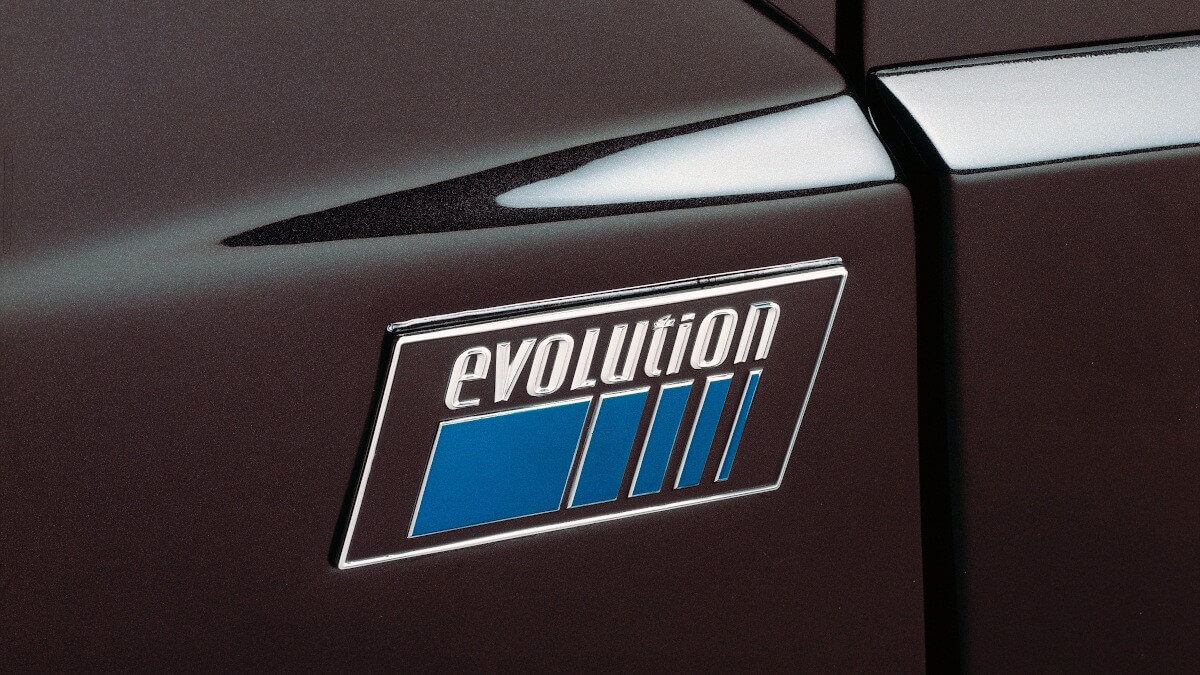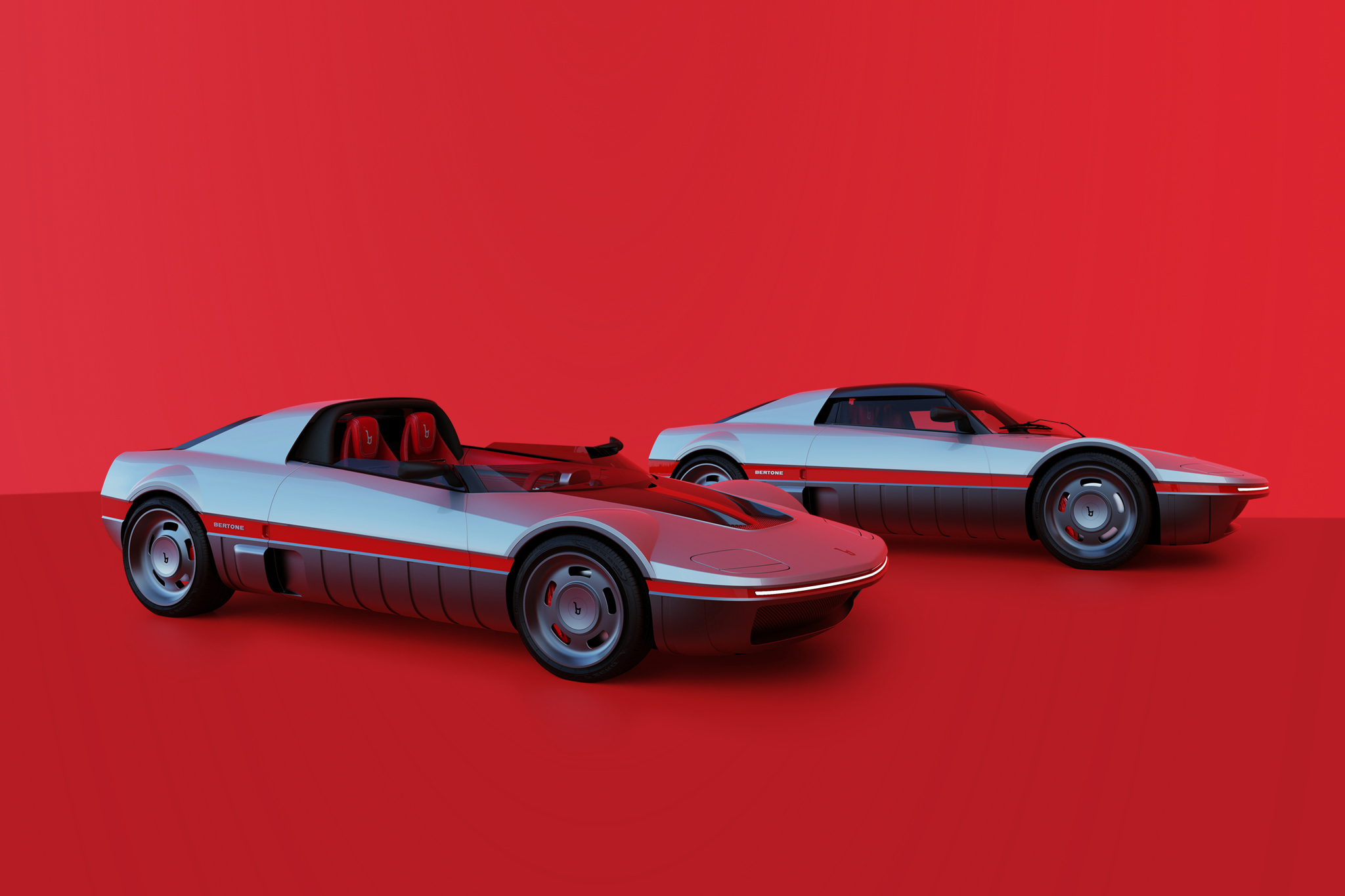30 Years of Mercedes-Benz 190 E Evo II
The fact that a vehicle such as the Evolution II could be produced required a certain amount of prehistory. This began in 1984 with the debut race on the then freshly completed Grand Prix circuit of the Nürburgring in Germany. For this, Mercedes-Benz sent 20 identical, brand new 190 E in the 2.3-16 version with 185 hp from a 2.3-liter 16V engine to the starting line. They only differed in their paint scheme (either smoke silver or blue-black metallic) and were driven by racing drivers of the Formula 1 World Championship at that time. At the end of a rain-soaked race, Ayrton Senna, who was relatively unknown at the time, crossed the finish line first. At the same time, the Swabian car brand was already competing in the Deutsche Tourenwagen Meisterschaft (German Touring Car Championship, DTM) and was developing new components for the 190 E again and again. In 1986, for example, the 190 E 2.5-16 with 2.5 liters of displacement and 195 hp made its debut at the Paris Motor Show. This resulted in the 190 E 2.5-16 Evolution for 1989, of which only 502 copies were produced with road approval in the color blue-black metallic for homologation reasons. It made its debut at the Geneva Motor Show in 1989.
Especially in motorsport, nothing is as old as the car of the previous year. This was particularly true of the old DTM and led to Mercedes-Benz unveiling the new 190 E 2.5-16 Evolution II at the Geneva Motor Show on 8 March 1990. Already in the version called ‘Evo I’ in retrospect, the 190 E showed fender extensions, a front spoiler lip and a small rear wing on the boot lid. Whoever thought of tuning excesses at this sight probably fainted for a short time at the first sight of the ‘Evo II’. The fender extensions now consisted of wide plastic add-on parts, which were extended up to the bumpers. Under the front skirt there is a spoiler lip adjustable in two steps in longitudinal direction, on the upper edge of the rear window there is an air deflector and on the boot lid a wing in XXL format with a pull-out flap. In addition, a spoiler strip on the actual boot lid underneath could be flipped to generate additional downforce. A maximum of 21.2 kilograms of downforce is possible on the front axle and 57.1 kilograms on the rear axle. At the time, no renowned tuner would have dared to make such a conversion of the 190 E – not even the now legendary D&W catalogue from Germany. And it wasn’t just pure motorsport components. In order to comply with the DTM regulations, 500 road-legal Evo II cars had to be offered on the open market – in the end, 502 cars in blue-black metallic were sold again, although the rumor persists that there were two silver cars for Daimler managers.




































How free this sale was can be well imagined with a price of 115,259.70 DM for a new 190 E Evo II in 1990 – especially when you also know that a 190 E 1.8 cost less than a third of that price. For so much money, customers could expect more than just wild looks. The 2.5-liter engine received a power boost to 173 kW/235 hp. Responsible for this were chief engine developer Dr.-Ing. Jörg Abthoff and his colleagues Rüdiger Herzog, Dag-Harald Hüttebräucker and Rudolf Thom. For the DTM version of the Evo II, they increased the power to 373 hp. This was the last time that a motorsports engine was developed and produced in the normal Mercedes-Benz engine department before the newly acquired AMG brand took over this task. The power of the 2.5-liter engine is transmitted to the 17-inch rear wheels via a manual five-speed sports transmission. The gearshift lever not only indicates the individual limitation number of the Evo II, but also the rather unusual shift pattern with the first gear at the bottem left (‘dog leg shifter’).
In the DTM, the 190 E Evo II didn’t make its racing debut until the race at the Nürburgring Nordschleife at 16 June 1990. While initially only two race cars were used, this changed until the last round of the DTM season in October 1990 at the Hockenheimring, where finally all factory-supported teams could race with the new car. Two months earlier, Kurt Thiim had already scored the first victory for the Evo II in Diepholz. In 1991 Klaus Ludwig achieved the vice championship and in 1992 the drivers’ championship with the Evo II, whereby he and the other Mercedes drivers won 16 of 24 DTM races in that season. Due to its rarity, the street version of the Mercedes-Benz 190 E 2.5-16 Evolution II is now a sought-after collectors car and reaches prices of up to 200,000 €. This means that it even outperforms the equally rare Evo I – presumably due to its unusual and almost shocking appearance at its debut 30 years ago.
Images: Mercedes-Benz




